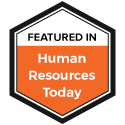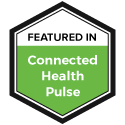ACA compliance has been a complex, time-consuming, and costly endeavor for employers across the country, and compliance isn’t made any easier by the fact that ACA requirements are dynamic and regularly updated. One such change, an increase to Patient-Centered Outcomes Research Institute (PCORI) fees—which are used to support healthcare research funding—is set to take effect later this year. Is your business prepared to comply?
PCORI was established to evaluate and consider the comparative effectiveness of health outcomes and clinical effectiveness of medical treatments.
Addressing Climbing Healthcare Costs
It’s no secret that healthcare in America is tremendously expensive. In 2021, Americans spent roughly $4.3 trillion on healthcare, which equates to just under $13,000 per person. The fight to meet the healthcare needs of a growing and aging American population has been a decades-long challenge, including years of intense debate over federal legislation to address American healthcare costs.
The utilization of health insurance by American healthcare consumers is a crucial factor in the viability of the broader healthcare system. It’s the ongoing financial support of healthy Americans—through the payment of insurance premiums—that funds the care of millions of Americans. For this reason, the Affordable Care Act, also known as the ACA or Obamacare, was a critical piece of legislation. Through the ACA’s individual mandate, the U.S. government induced millions of Americans to participate in the health insurance marketplace and created important employer responsibilities to both offer affordable coverage and contribute to healthcare research funding through payment of PCORI fees.
Healthcare is a complicated issue; however, most Americans understand the basic concept that money paid into the healthcare insurance system in the form of premiums contributes to healthcare costs incurred by patients and paid by insurers. What is less familiar to many Americans is the use of certain ACA fees to pay for medical research and development. In other words, this money—PCORI fees—is used not simply to pay for immediate medical needs but in an attempt to make future medical care more cost efficient and effective through healthcare research funding.
Changes to PCORI Fees
PCORI fees are a great example of the changing nature of ACA compliance requirements. Initially, these fees were scheduled to expire at the end of 2020. They were extended, though, through September 30, 2029, as part of H.R. 1865—the Further Consolidated Appropriations Act of 2020. The fees, themselves, have also changed.
The extension and related changes should come as no surprise to those that have been tracking the issue. Near the end of 2022, the IRS issued an update regarding Patient-Centered Outcomes Research Institute (PCORI) fees for 2023, including notification that the fees would be increasing. At the time, the ACA reported: “For plans that end on or after October 1, 2022, and before October 1, 2023, the PCORI rate per covered individual is $3.00. As a reminder for employers, the rate for covered individuals with plans that end on or after October 1, 2021, and before October 1, 2022, is $2.79.”
It’s important to note that companies required to make annual PCORI payments need to calculate the fee based on the average number of lives covered by their policies—including dependents, spouses, retirees, and employees participating under COBRA.
Methods for Calculating PCORI Fees
The IRS offers several methods for calculating the average fee associated with the employer responsibility, including:
- Actual Count Method—actual number of employees covered on every day of the plan divided by the number of days in the plan year.
- Snapshot Method—total number of employees covered on a specific date during the quarter divided by the number of dates that a count was made.
- Member Months Method—a calculation based on the member months reported on the NAIC Supplemental Health Care Exhibit that was filed for that calendar year.
- State Form Method—a form based on the member months method filed in the business’ home state.
- Form 5500 Method—total participants covered at the start and end of the plan year divided by two.
Plan sponsors must use the Actual Count Method, Snapshot Method, or Form 5500 Method. Methods available will vary depending on if you’re an issuer of specified health coverage or a plan sponsor.
Who is Impacted?
The update to the PCORI fees doesn’t change who is obligated to pay, just the amounts owed. As before, all issuers of specified health insurance policies and plan sponsors offering self-funded health plans, including Health Reimbursement Arrangements are required to pay PCORI fees. Health insurance policies and self-insured plans that only provide expected benefits (vision and dental) may not be subject to PCORI fees.
Self-funded employers and health carriers are required to submit annual PCORI fees by July 31 using Form 720 and the Electronic Federal Tax Payment System (EFTPS).
If you need help understanding the employer responsibilities associated with the yearly PCORI fee payments, we can handle this responsibility for you at no additional cost as part of our full-service ACA Complete solution.






